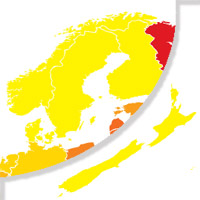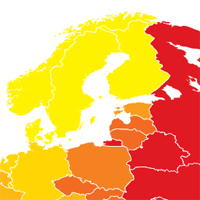Marie Chêne, Senior Research Coordinator at Transparency International, looks at the countries that are ranked highest in the 2011 Corruption Perceptions Index.
New Zealand, Denmark, Finland and Sweden have been consistently ranked at the top of the Corruption Perceptions Index and are perceived to be the least corrupt of all the countries surveyed.
They are not perfect – still falling short of the target 10 out of 10 on the index – but many still want to know about how these countries have managed to contain corruption.
 Beside law enforcement, there is a broad consensus that fighting corruption involves public participation and transparency mechanisms such as disclosure of information.
Beside law enforcement, there is a broad consensus that fighting corruption involves public participation and transparency mechanisms such as disclosure of information.
Preliminary findings from upcoming country studies for Finland, Denmark and Sweden indicate that this “integrity system” function relatively well in these countries.
But what makes their “national integrity systems” more effective?
Beside a strong commitment to anti-corruption by political leaders, Finland, Sweden, Denmark and to a certain extent New Zealand all share a common set of characteristics that are typically correlated with lower levels of corruption.
Recent studies show that freedom of the press is positively correlated with control of corruption in well established democracies. Finland, Denmark, Sweden and New Zealand all have high GDP per capita, low inequality rates, literacy rates close to 100 %, and prioritise human right issues (e.g. gender equality, freedom of information).
Crucially, they all perform well in terms of government openness and effectiveness.
Read about the Corruption Perceptions Index 2011 here.
For regional perspectives on the CPI 2011 results see here:
For a blog post defining public sector corruption click here and to read about our CPI Iphone App see here.
This does not fully explain the good performance in fighting corruption. A hundred years ago, before their transition to good governance, Denmark and Sweden were not the darlings of the anti-corruption world. For example, the Swedish principle of public access to official documents is one of the oldest established in the world, dates back to 1766.
 Well performing countries typically have a long tradition of government openness, civic activism and social trust, with strong transparency and accountability mechanism in place allowing citizens to monitor their politicians and hold them accountable for their actions and decisions.
Well performing countries typically have a long tradition of government openness, civic activism and social trust, with strong transparency and accountability mechanism in place allowing citizens to monitor their politicians and hold them accountable for their actions and decisions.
So what works?
- disclosure of budget information closes the door to waste and misappropriation of public funds. Therefore, countries should seek to promote information disclosure as well as enhance citizens’ participation throughout the budget process. The Open Budget Index shows that Sweden allows citizens to assess how their government is managing public funds.
- Codes of conduct for public servants. Denmark obliges ministers to monthly publish information on their spending travel and gifts
- Legal framework criminalising a wide range of corruption related abuses and an independent and efficient judiciary.
The good news is that many countries can copy the transparency/accountability route to good governance. A recent study looking at the Finnish case concludes that, contrary to the Singapore’s top down approach to anti-corruption, which is economically unsustainable for most countries, this bottom-up model based on public trust, transparency and social capital is affordable, transferable and adaptable to very different political contexts.
It is important to point out that these countries still face challenges e.g protective legislation for whistleblowers, corruption risk in public procurement, effective political (party) finance regulation etc.
Keep your eyes posted for more in 2012.















 Connect with us on Facebook
Connect with us on Facebook Follow us on Twitter
Follow us on Twitter